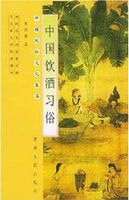Self-fertilization must occur, however, if the bees have not removed all the pollen when a blossom closes.When the purple avens opens in Europe, the bees desert even the primrose to feast upon its abundant nectar.Since water is the prime necessity in the manufacture of this sweet, and since insects that feed upon it have so much to do with the multiplication of flowers, it is not surprising that the swamp, which has been called "nature's sanctuary," should have its altars so exquisitely decked.This blossom hangs its head, partly to protect its precious nectar from rain, and partly to make pilfering well nigh impossible to the unwelcome crawling insect that may have braved the forbidding hairy stems.
WILD LUPINE; OLD MAID'S BONNETS; WILD PEA; SUN DIAL(Lupinus perennis) Pea family Flowers - Vivid blue, very rarely pink or white, butterfly-shaped corolla consisting of standard, wings, and keel; about 1/2 in.
long, borne in a long raceme at end of stern; calyx 2-lipped, deeply toothed.Stem: Erect, branching, leafy, to 2 ft.high.
Leaves: Palmnate, compounded of from 7 to 11 (usually 8)leaflets.Fruit: A broad, flat, very hairy pod, 1 1/2 in.long, and containing 4 or 5 seeds.
Preferred Habitat - Dry, sandy places, banks, and hillsides.
Flowering Season - May-June.
Distribution - United States east of Mississippi, and eastern Canada.
Farmers once thought that this plant preyed upon the fertility of their soil, as we see in the derivation of its name, from lupus, a wolf; whereas the lupine contents itself with sterile waste land no one should grudge it - steep gravelly banks, railroad tracks, exposed sunny hills, where even it must often burn out under fierce sunshine did not its root penetrate to surprising depths.It spreads far and wide in thrifty colonies, reflecting the vivid color of June skies, until, as Thoreau says, "the earth is blued with it."What is the advantage gained in the pea-shaped blossom? As usual, the insect that fertilizes the flower best knows the answer.The corolla has five petals, the upper one called the standard, chiefly a flaunted advertisement; two side wings, or platforms, to alight on; and a keel like a miniature boat, formed by the two lower petals, whose edges meet.In this the pistil, stamens, and nectar are concealed and protected.The pressure of a bee's weight as he alights on the wings, light as it must be, is nevertheless sufficient to depress and open the keel, which is elastically affected by their motion, and so to expose the pollen just where the long-lipped bee must rub off some against his underside as he sucks the nectar.He actually seems to pump the pollen that has fallen into the forward part of the keel upon himself, as he moves about.As soon as he leaves the flower, the elastic wings resume their former position, thus closing the keel to prevent waste of pollen.Take a sweet pea from the garden, press down its wings with the thumb and forefinger to imitate the action of the bee on them; note how the keel opens to display its treasures, and resumes its customary shape when the pressure is removed.
The lupine is another of those interesting plants which go to sleep at night.Some members of the genus erect one half of the leaf and droop the other half until it becomes a vertical instead of the horizontal star it is by day.Frequently the leaflets rotate as much as 90 degrees on their own axes.Some lupines fold their leaflets, not at night only, but during the day also there is more or less movement in the leaves.Sun dial, a popular name for the wild lupine, has reference to this peculiarity.The leaf of our species shuts downward around its stem, umbrella fashion, or the leaflets are erected to prevent the chilling which comes to horizontal surfaces by radiation, some scientists think."That the sleep movements of leaves are in some manner of high importance to the plants which exhibit them," says Darwin, "few will dispute who have observed how complex they sometimes are."CANADIAN or SHOWY TICK-TREFOIL
(Meibomia Canadensis; Desmodium Canadense of Gray) Pea family Flowers - Pinkish or bluish purple, butterfly-shaped, about 1/2in.long, borne in dense, terminal, elongated racemes.Stem;Erect, hairy, leafy, 2 to 8 ft.high.Leaves: Compounded of 3oblong leaflets, the central one largest; upper leaves nearly seated on stem; bracts, conspicuous before flowering, early falling off.Fruit: A flat pod, about 1 in.long, jointed, and covered with minute hooked bristles, the lower edge of pod scalloped; almost seated in calyx.
Preferred Habitat - Thickets, woods, riverbanks, bogs.Flowering Season - July-September.
Distribution - New Brunswick to Northwest Territory, south to North Carolina, westward to Indian Territory and Dakota.















